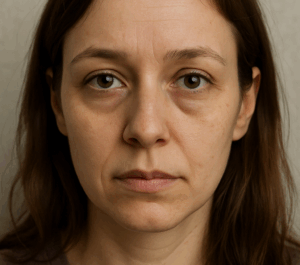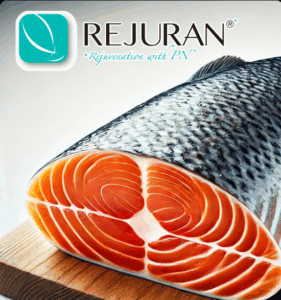In the world of aesthetic medicine, hyaluronic acid (HA) fillers have long reigned supreme. However, a new wave of innovative dermal fillers is challenging this status quo, offering longer-lasting results and more comprehensive facial rejuvenation. As a board-certified plastic surgeon, I’m excited to introduce you to five remarkable alternatives to traditional HA fillers for your facial rejuvenation journey.
Understanding Non-HA Fillers
Before we dive into the specifics, it’s crucial to understand how these alternative fillers differ from their HA counterparts. Non-HA fillers are designed to provide more global effects, addressing overall facial volume loss rather than targeting specific areas like nasolabial folds or lips.
These innovative fillers are typically more robust and long-lasting, with some offering results that can endure for years rather than months. They work by not only adding volume but also stimulating your body’s natural collagen production, leading to more sustainable improvements in facial contours.
One key consideration is that many non-HA fillers are difficult or impossible to dissolve, unlike HA fillers which can be quickly reversed with hyaluronidase. This characteristic makes precise injection technique and an experienced practitioner crucial for optimal results.
The Importance of Future-Proofing Your Facial Rejuvenation
When considering any facial filler treatment, it’s essential to think long-term, especially if you’re contemplating a facelift in the future. Some fillers can create scar tissue in the superficial muscular aponeurotic system (SMAS) layer, which is crucial for facelift procedures.
Choosing the right filler now can ensure that you’re not compromising future surgical options. This is where the expertise of a board-certified plastic surgeon becomes invaluable, as they can guide you towards the most appropriate treatment plan for your current and future aesthetic goals.
Top 5 Filler Alternatives to Hyaluronic Acid
1. Sculptra (Poly-L-lactic Acid)
Sculptra, composed of poly-L-lactic acid (PLLA), is a biocompatible synthetic substance that gradually stimulates your body’s collagen production. It’s particularly effective for restoring volume in the cheeks and overall facial contours.
Key features:
- Gradual, natural-looking results
- Typically requires a series of treatments
- Results can last up to two years
- Cannot be dissolved or reversed
Sculptra is ideal for patients seeking subtle, progressive improvements in facial volume. It’s often used to address age-related volume loss in the cheeks, temples, and jawline.
2. Radiesse (Calcium Hydroxylapatite)
Radiesse consists of calcium hydroxylapatite (CaHA) microspheres suspended in a gel carrier. This unique composition provides immediate volume and stimulates natural collagen production.
Key features:
- Immediate and long-term results
- Can be diluted for use in different areas
- Results typically last 12-18 months
- Difficult but possible to dissolve if needed
Radiesse excels in treating deeper wrinkles and folds, as well as restoring volume in the cheeks and hands. Its versatility makes it a popular choice among practitioners and patients alike.
3. Bellafill (PMMA and Collagen)
Bellafill is a unique filler containing polymethylmethacrylate (PMMA) microspheres suspended in bovine collagen. It provides immediate results from the collagen and long-term benefits as the PMMA microspheres stimulate your own collagen production.
Key features:
- Immediate and long-lasting results
- FDA-approved to last up to 5 years
- Cannot be dissolved or reversed
- Requires a skin test before treatment
Bellafill is particularly effective for treating nasolabial folds and acne scars. Its long-lasting nature makes it an excellent option for patients seeking a more permanent solution.
4. Renuva (Adipose Matrix)
Renuva is an innovative filler derived from cadaver adipose tissue. It acts as a scaffolding to support and stimulate your body’s own fat growth, making it an excellent option for very thin patients or those with localized fat loss.
Key features:
- Natural-looking results
- Gradual improvement over time
- About 50% retention rate
- Can be used in various areas of the body
Renuva is particularly useful for correcting small contour deformities or adding volume in areas where traditional fillers may not be suitable.
5. Autologous Fat Transfer
While not technically a “filler” in the traditional sense, autologous fat transfer deserves mention as a powerful tool for facial rejuvenation. This procedure uses your own fat, typically harvested through liposuction, to restore volume to the face.
Key features:
- Natural, long-lasting results
- Versatile application – can be liquefied or solid or in-between
- High retention rate – about 70-80%
- Can be placed deep in the face, under the SMAS layer
Fat transfer is ideal for patients seeking comprehensive facial rejuvenation, especially those who may be considering a facelift in the future.
Choosing the Right Filler for You
Selecting the optimal filler depends on various factors, including your aesthetic goals, facial anatomy, and lifestyle. Here are some key considerations:
- Desired longevity: If you’re looking for long-term results, options like Bellafill or fat transfer might be ideal.
- Reversibility: If you prefer a reversible option, Radiesse might be a better choice than Sculptra or Bellafill.
- Treatment areas: Some fillers excel in specific areas, like Sculptra for cheek augmentation or Bellafill for acne scars.
- Future procedures: If you’re considering a facelift in the future, fat transfer might be the most compatible option.
- Natural vs. immediate results: Sculptra and Renuva offer gradual improvements, while Radiesse and Bellafill provide more immediate volume.
Conclusion
While hyaluronic acid fillers remain popular, these five alternatives offer exciting possibilities for those seeking longer-lasting, more comprehensive facial rejuvenation. From the collagen-stimulating effects of Sculptra to the permanence of fat transfer, each option brings unique benefits to the table.
As with any aesthetic procedure, the key to success lies in choosing an experienced, board-certified plastic surgeon who can guide you towards the best treatment plan for your individual needs and goals.
Take the first step towards long-lasting facial rejuvenation. Contact us now to discover which non-HA filler is right for you!
FAQs
1. How long do non-HA fillers typically last compared to hyaluronic acid fillers?
2. Are non-HA fillers reversible like hyaluronic acid fillers?
3. What are the potential side effects of non-HA fillers?
4. Can non-HA fillers be combined with other aesthetic treatments?
5. How much do non-HA fillers cost compared to traditional HA fillers?
6. Are there any age restrictions for using non-HA fillers?
7. How soon can I see results from non-HA fillers?
Don’t miss out on the future of aesthetic procedures.
Sign up for our newsletter to stay updated on the latest innovations!




Recent Comments